#Superior National Forest
Explore tagged Tumblr posts
Text


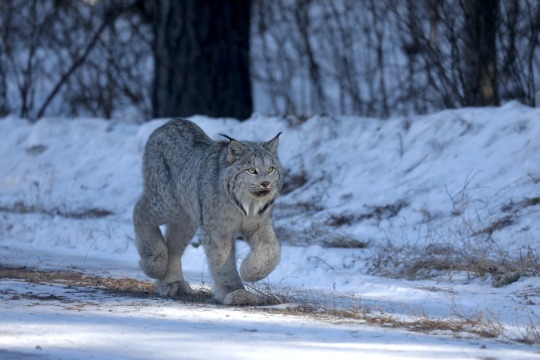
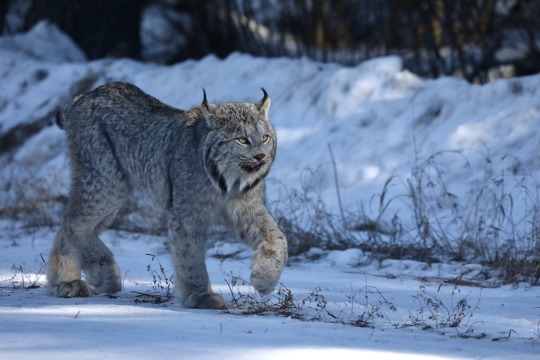
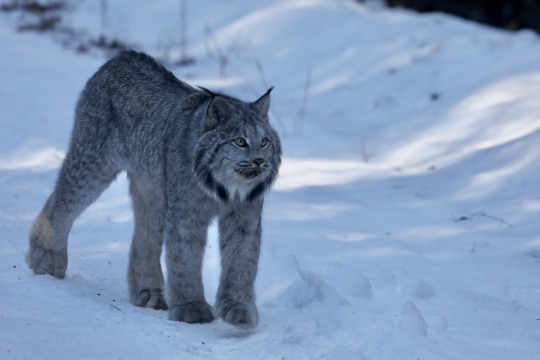
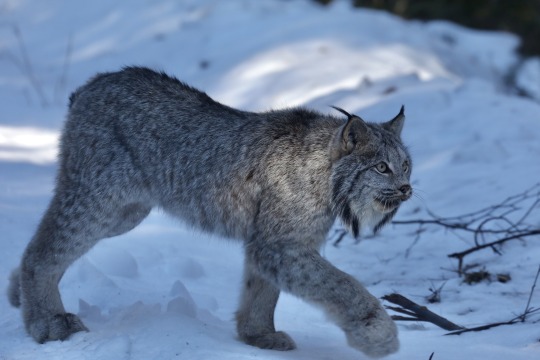
A pair of courting Canadian Lynxes on an empty logging road
Superior National Forest, taken February 2024
1K notes
·
View notes
Text

Camp set up on canoe camp site on an island in Lake Four in Superior National Forest.
Minnesota
1940
#vintage camping#campfire light#minnesota#superior national forest#lake four#history#camping#canoeing#fishing#1940s
160 notes
·
View notes
Photo

Fall colors in Northern Minnesota, Superior National Forest in late September 2024.
15 notes
·
View notes
Text

#meanwhile in minnesota#gdi this is too cute#(((for fuckin real tho create a defensible perimeter 🫣)))#superior national forest
349 notes
·
View notes
Text









Hey check this out
#The kind of hilly iron rich areas of the Superior National Forest are some of my favorite landscapes on earth#The highest elevation in the state is here but it's not really all that high. More of a big hill. I think 2000 something feet
45 notes
·
View notes
Text
Best National Park Service Site To Vist- MSN
Best National Park in the US? It's not Yellowstone, Yosemite or the Great Smokies, according to new list (msn.com)
I have not had the chance to visit Isle Royale National Park but I have wanted to visit for many many many years. I lied, i did have the opportunity and as i readied to go i broke a toe.... and that kinda screwed me from going since the only way of getting around on the islands is walking and boating.

But I have heard nothing but good things from folks who have visited. And Lake Superior is one of my favorite bodies of water. And would go back to the Upper Peninsula of Michigan in a heart beat if the opportunity showed itself. So go visit if you get the chance. And brush up on your rock knowledge before you go. There are some beautiful rocks on those shores including Lake Superior Agates (am the proud owner of a few), native copper and datolite.

Also if you go, make sure you also visit Keweenaw National Historic Park just a few miles up from the boat dock. It is a fantastic, little known, historic site in the NPS that talks about the copper industry in the US and the people it drew to the country from ALLLL over the world. At one point in the 19th century and early 20th century Calumet, MI was just as ethically diverse as NYC at the time.

Click on the above Identification Badge to be taken to Keweenaw's website of a few of the artifacts they have.
#national park service#Keweenaw National Historic Park#Isle Royale National Park#Isle Royale#Upper Peninsula#upper peninsula of michigan#MI#michigan#lake superior#Lake superior beach#lake superior agate#Ranger Peyton Tips#NPS#nature#landscape#photography#travel#mountains#forest#national parks
8 notes
·
View notes
Text

#michigan#lake#national forest#hike#kayak#water#beach#summer#lake superior#pictured rocks national lakeshore
2 notes
·
View notes
Text

Originating from the Ojibwe word mishigamaa, meaning “large water” or “large lake”, Michigan was admitted into the union in 1837 as the 26th state.
With a population of about 10 million, it is the 10th most populous and the largest state by total area east of the Mississippi River.
Michigan has the nation’s longest freshwater coastline, is bounded by four of the five Great Lakes, and is the only state to consist of two peninsulas; the Lower Peninsula (proudly referred to as the “mitten” by residents) and Upper Peninsula are separated by the Straits of Mackinac.
90% of the “U.P.” is forested land and is an important tourist destination known for its accessible wilderness, unique landscapes, vast wildlife, 150 waterfalls, and the Soo Locks (where ocean-going freighters make the 21-foot leap from Lake Superior to Lake Huron).
160 notes
·
View notes
Text


In mid-August, a three year-old lawsuit charging that environmentalist groups were religious extremists comparable to some of the more violent, intolerant, ultra-orthodox Islamic sects collapsed when the attorney failed to meet a re-filing deadline with the U.S. Supreme Court.
The suit had been brought against the Forest Guardians, the Superior Wilderness Action Network, and the U.S. Forest Service by the 125 companies that make up the Associated Contract Loggers (A.C.L.) of northern Minnesota. The loggers were asking for $600,000 in damages and permission to plunder timber from the Superior National Forest.
Lawyers for the A.C.L. argued that deep ecology was actually a religion, and so by extension, environmental groups that espoused its philosophies were cults, and by outlawing timber cutting on so-called “federal land,” the Forest Service was favoring a particular set of religious doctrines and was therefore violating the guarantee of neutrality in matters of religion purportedly vouchsafed in the U.S. Constitution.
According to theological scholars at the logging company syndicate like former executive director, Larry Jones, Deep Ecology is an “earth-centered religion,” a “belief system” that holds that “trees and Man [sic] are equal.” Anti-logging activists who extol the virtues of forested spaces over industry profit and environmental degradation are spiritual zealots, and the government functionaries who are swayed by their proselytizing may turn out to be fanatical closet druids themselves.
Stephen Young, the A.C.L. lawyer and a former Republican Party senatorial candidate, explained his legal action on such esteemed venues as Rush Limbaugh’s radio show by saying that clear-cutting in national forests had been restricted by the Forest Service for no reason other than reverebce for some fringe New Age religion.
A U.S. District Court judge in Minnesota dismissed the case as “frivolous” in February 2000, but the A.C.L. petitioned the Supreme Court last year after reports that Wahabi Islamic extremists were responsible for the blitzkrieg attacks on the World Trade Center and the Pentagon.
“The doctrine of Deep Ecology is the very worldview that gave rise to eco-terrorism. We feel that after the events of September 11, it’s an obligation of the Supreme Court to keep religious fanaticism in check,” Young said. “Just as devout faith in the literal words of various Hadith of Mohammad gave the Taliban license to impose through state power harsh conditions on the women of Afghanistan, so Deep Ecology gives license to its adherents to take extreme actions against those who would live by different beliefs.”
Perhaps the less said about this sleazy episode the better, which is just as well, since it is so hard to get a firm analytic grasp on it because it is sad and sick on so many different levels. For instance, likening the plight of women in Afghanistan to that of lumber barons in northern Minnesota is staggering in its shamelessness, as it has been my experience that women living near industrial logging camps are subjected to at least the same sort of abuse, derision, and masculinist domination as women who had been living in Taliban-controlled Kandahar.
And we all know that if the U.S. government was serious about keeping homicidal religious terrorism in check, then John Ashcroft and the Army of God anti-abortionists would be in the Guantanamo Bay gulag. It was all obviously just a miserable attempt to slander and jam up anti-logging activists with legal action, and it failed.
But I can’t help thinking about the broader philosophical implications of who supported it. I have no idea as to whether or not there are Deep Ecologists involved in Forest Guardians or the Superior Wilderness Action Network (and I suspect that none are to be found among the Forest Service feds), but in demonizing Deep Ecology as an alien fanatical religious practice in this lawsuit, we can see once again how tighly Christianity is bound to capitalist exploitation and ecological destruction.
Deep ecology is not a single doctrine, but rather an ethical sensibility informed by a variety of perspectives on the relationship of hummankind to the whole of nature’s systems. We can oversimplifydeep ecology by saying that its fundamentals include a belief in the intrinsic value of all forms of life as well as the holistic diversity of those life forms. The economic, technological, and ideological beliefs that prop up Western civilization antagonistically threaten the existence and diversity of natural life systems.
Individuals who adhere to the ideas of Deep Ecology are obligated to work towards radically changing those deadly attitudes and social structures. Deep ecology challenges the long-held anthropocentrist notion which entitles humans to take advantage of and destroy wilderness at will and for private profit, a view obviously held sacred by the A.C.L. timber industrialists.
Anthropocentrism derives from core Judeo-Christian values that have been part of the settler-capitalist catechism on this continent since the early seventeenth-century. Consider, for example, the preaching of Puritan minister, John Cotton. In his popular pamphlet of the 1630’s, “God’s Promise to His Plantation,” Cotton claimed that God desired colonists to “take possesion” of land in New England, saying that whosoever “bestoweth culture and husbandry upon it” has an inviolable divine right to it.
The Native Americans, dying in large numbers from exposure to European diseases was proff that God wanted to wipe the slate clean for the Puritans and thereby better facilitate His decree in the Book of Genesis that humans aggresively “subdue” the earth. Christians were the center of the universe, exclusively licensed by Almighty God to dominate the land, eradicate wild nature, and replace it with the purity of civilization. “All the world out of the Church is as wilderness, or at best, a wild field where all manner of unclean and wild beasts live and feed,” Cotton proclaimed in 1642.
There were many others during the period who were at least as enthusiastic about Christ, colonization, and commercial cultivation as Cotton was, and these ideas, linked to distinctly Judeo-Christian models of linear (rather than seasonally cyclical) time, became ingrained in the settler psyche, especially during the era of westward expansion some two centuries later. Justified by the Calvinist capitalism of Adam Smith’s The Wealth of Nations — complete with its fallacious notions about the ennobling “civilizing” powers of wealth, marlets, and economic growth — the implications of Puritan repugnance for the wilderness and wildness on the North American continent becomes depressingly clear.
As inheritors of Puritan fanaticism that have erected the violent, intolerant faith of capitalism, it is individuals and organizations like the A.C.L. who hold a worldview that advances a five hundred year-old campaign of terrorism against entire bioregions and “empowers its adherents to take extreme action against those who would live by different beliefs.”
#deep ecology#environment#Fifth Estate#359#Green Scare#legal system#religion#anarchism#revolution#climate crisis#ecology#climate change#resistance#community building#practical anarchy#practical anarchism#anarchist society#practical#daily posts#communism#anti capitalist#anti capitalism#late stage capitalism#organization#grassroots#grass roots#anarchists#libraries#leftism#social issues
57 notes
·
View notes
Photo

Battle of Lake Erie
The Battle of Lake Erie (10 September 1813), also known as the Battle of Put-in-Bay, was a decisive naval engagement in the War of 1812. It saw a squadron of US ships, under Oliver Hazard Perry, defeat a British squadron near Put-in-Bay, Ohio, ultimately leading to the American domination of Lake Erie and allowing for their recapture of Detroit.
The Battle of Lake Erie
Julian Oliver Davidson (Public Domain)
Background
In the spring of 1813, the sounds of constant shipbuilding echoed off the waters of the Great Lakes. For almost a year now, the nations of the United States and the United Kingdom had been at war, with the fate of Canada hanging in the balance. Two US invasions of the British colony had already been repelled before the Americans shifted their focus to the Great Lakes, particularly the mighty Lake Ontario. Both sides knew that naval superiority would give the Americans an advantage in their next invasion attempt, leading both sides to race to put new ships in the water. By June, the Americans and the British each had naval squadrons patrolling Lake Ontario, however, neither squadron moved to attack the other. Since naval actions tended to be unpredictable – reliant as they were on external factors like the wind – neither squadron wanted to take the initiative and risk its own destruction. Instead, the squadrons just danced around one another, waiting for the other to make the first move.
Ships were also being built on Lake Erie, even though it was considered by both sides to be of secondary importance to Lake Ontario. Currently, Lake Erie was under the control of the British, who had seized it early in the war and had used it to help maintain their occupation of the Michigan Territory after the Siege of Detroit (15-16 August 1812). If the Americans wanted to retake Michigan, they would need to first establish dominance on Erie, leading them to begin a shipbuilding program on this lake as well. Command of this burgeoning US squadron was given to Oliver Hazard Perry, a 27-year-old naval officer from Rhode Island, who had already accumulated a great deal of naval experience during his service in the Quasi-War and the First Barbary War. In late March, Perry arrived at Presque Isle, where the new ships were being built at a frantic pace. Crews of axmen had already laid low the surrounding forests to gather enough wood for the vessels, often chopping nonstop from sunrise to sunset; so swift was their work that, in the words of historian Pierre Berton, "a tree on the outskirts of the settlement can be growing one day and part of a ship the next" (508).
Still, there were frustrating delays. Food shortages led the workers to go on strike, while materials ordered from far-off locations – canvas from Philadelphia, for example, or spike rods from Buffalo – took a while to arrive. When the ships finally neared completion in July, Perry faced a new problem: a lack of sailors. Commodore Isaac Chauncey, the commander of the Lake Ontario fleet and Perry's direct superior, had kept all the best sailors for himself, sending Perry only those he considered to be the dregs of his squadron. Eager to attack as soon as possible, Perry spent the following weeks pleading with Chauncey for more men, writing, "For God's sake…send me men and officers" (Berton, 523). In August, Chauncey finally relented and sent Perry 89 experienced men. Among these reinforcements was Lt. Jesse Elliott, whose recent exploits, including the daring capture of two British brigs, had turned him into a war hero. Perry was so happy to have these men that he put Elliott in command of one of the new ships, USS Niagara, and let him choose his own crew. Elliott, an arrogant and ambitious man who felt slighted that he had not been given Perry's job, chose all the best men, leaving the other captains to grumble that the ships were unequally manned now that all the best sailors were on the Niagara.
Oliver Hazard Perry
Gilbert Stuart and Jane Stuart (Public Domain)
On 31 August, Perry received more welcome news: General William Henry Harrison, commander of the US Army of the Northwest, had sent him 100 Kentucky riflemen to act as marines in the coming battle. The Kentuckians, many of whom had never seen a ship before, marveled at each and every detail, climbing the masts and exploring the holds before Perry ordered them on deck to teach them naval etiquette. By early September, Perry's small squadron was ready for battle, or as ready as it was likely to get. Of his nine vessels, three were brigs (Lawrence, Caledonia, Niagara), five were schooners (Ariel, Scorpion, Somers, Porcupine, Tigress), and one was a sloop (Trippe). His flagship, USS Lawrence, was named after his friend, Captain James Lawrence, who had recently been mortally wounded aboard the USS Chesapeake in a single-ship action off Boston. Lawrence's last words – "Don't give up the ship" – were sewn in white letters on a dark blue battle flag that Perry intended to hoist onto his masthead as a signal for action. With his ships in the water and his men on the decks, Perry now had only to wait for the coming fight.
Continue reading...
42 notes
·
View notes
Text
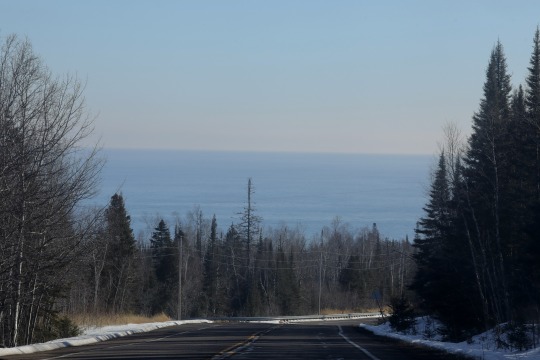
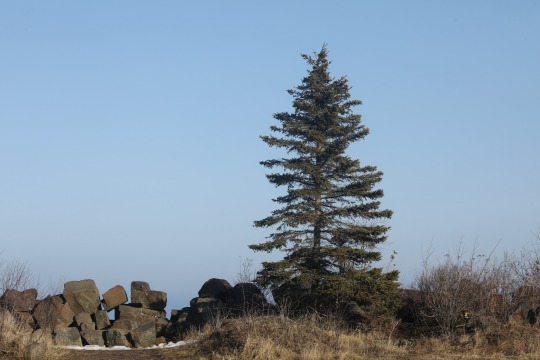

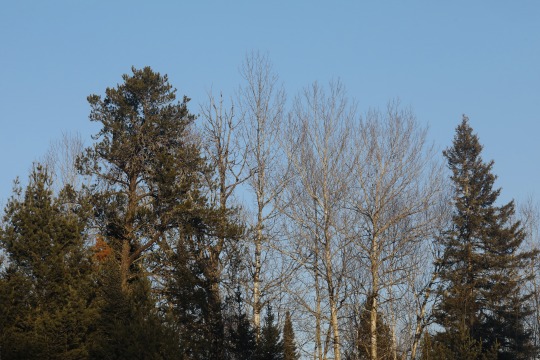
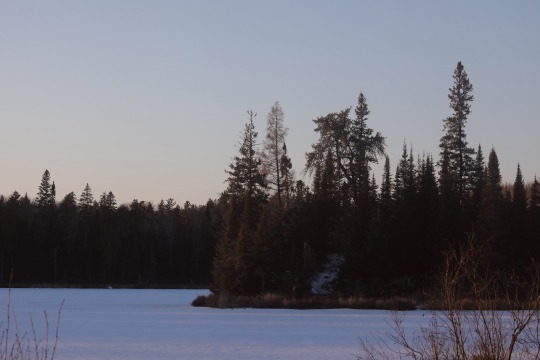
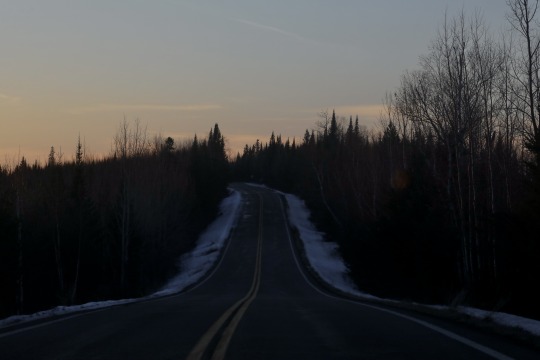
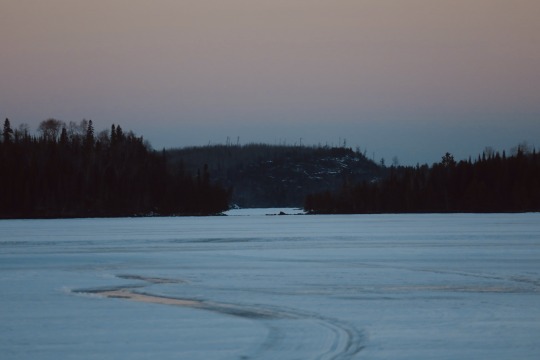
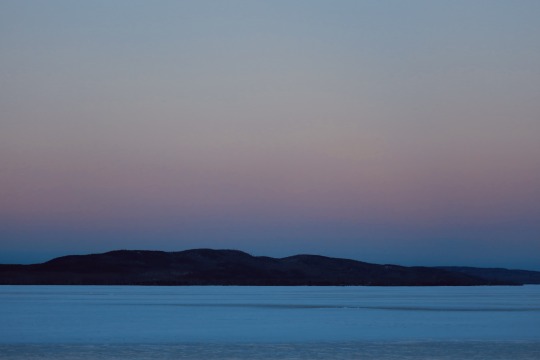
Dusk on the Gunflint Trail
Superior National Forest, taken February 2024
#trees#forests#superior national forest#frozen lakes#north woods gothic#minnesota#my photos#my places
289 notes
·
View notes
Text

A group of friends explore Burntside Lake
Superior National Forest, Minnesota
1940
#vintage camping#campfire light#minnesota#superior national forest#burntside lake#canoeing#canoes#summer#history#1940s
99 notes
·
View notes
Photo

Sunset in the Superior National Forest in Northern Minnesota.
9 notes
·
View notes
Text
Paws and Claws for the Cause - American WWII Propaganda Posters Featuring Animals 🐕🦺🦅

During World War II, U.S. propaganda posters wielded not just patriotic fervor but also a diverse array of animal symbolism to rally the public. Faithful dogs, regal eagles, and even the humble wildlife of American forests became emblems of the home front's dedication to victory. Let's take a leap into the past and examine the role these animals played in U.S. wartime propaganda.

Dogs: Loyal Companions in the Fight for Freedom 🐶
Dogs in WWII posters often represented trustworthiness and the protective instincts crucial to American security. A notable poster from the National Archives shows a vigilant dog alongside a call to action for war bond contributions, encapsulating the role of dogs as both companions and defenders.

Eagles: The Winged Warriors of American Ideals 🦅
The American eagle soared across numerous posters, its powerful wingspan casting a shadow over threats to liberty, and its sharp gaze fixed on aerial superiority and victory.

Wildlife: Symbols of Conservation and the Nation's Resolve 🦉
Bears, squirrels, and other native animals symbolized the conservation efforts on the home front. These posters encouraged citizens to collect and contribute materials critical to the war effort, equating everyday actions with the strength and resourcefulness of America's wildlife.

Enemies as Pests: Propaganda's Vermin 🐁
Enemy forces were often portrayed as vermin, such as rats or insects, to emphasize the threat and repugnance of their ideologies. This stark animal imagery served to dehumanize the enemy.
These posters from the National Archives Catalog remind us of the power of imagery and metaphor in rallying a nation to unite against a common foe. As we explore these historical artifacts, we gain insight into the era's cultural mindset and the enduring impact of visual persuasion.
Read more:
113 notes
·
View notes
Text
🎆 Fireworks Headcanon 🎆
(And subsequently Independence Day ones since this is 4th of July where I'm from).
Alex- not really a big fan but would toss around the gridball on the beach while waiting for them to start. Super nostalgic about the picnic though. Used to do that with his mom. All the favorites (and Granny doesn't disappoint). Carries the basket out and helps her setup and even tries to get Grandpa George in the spirit by asking about his old war stories.
Abigail - loves them and would raid her dad's secret (illegal) stash to get the big ones to set off with Sam. Drags Seb into her shenanigans. Ends the night with a big bonfire on the beach, telling scary ghost stories. Who's afraid of the big bad wolf? Not this gal.
Elliott - Earlier in the day, he's a bit annoyed by the sudden appearance of so many people on the beach. He wanders off to contemplate a poem about patriotism and glory. Might crack open a pale ale at the Stardrop before heading to the waterfront. He is a romantic so of course, he loves fireworks! Preferably in a little boat out in the ocean, away from the crowds. Maybe stealing time with Farmer (or if not in a relationship, with Leah).
Emily - has a little fireworks dance! Magic! Trying to pull Haley outside to enjoy but her sister won't budge. Emily is passing out little flags to her friends and neighbors. And she's decked out in patriotic colors, handmade bandana and hair bows and all.
Harvey - is too busy treating the idiots who set off fireworks and got burned to really enjoy them. Might start some "sparks" of his own if Farmer comes to drag him outside to enjoy. *wiggles eyebrows* They are far more exciting than fireworks (and something about these fiery lights in the night sky is romantic... or at least that's what someone once told him). Absolutely sipping wine coolers once he's off duty.
Haley - smoke messes with her hair and makeup and clothes and no... that would be a hard no. But she does enjoy holiday sales earlier in the day, stocking up on her favorite treats, athleisure wear, and cosmetics.
Leah - She's moderately interested in fireworks, and may feign more interest for the sake of Elliott. Wanders off into the forest to enjoy quiet. In honor of the "rebel spirit," she skinny dips in the Cindersap Lake and embraces "one with nature" vibes.
Sam - loves them! He's probably setting off the big (illegal) ones. Don't tell Lewis. Organizes a beach volleyball game, pulls in Seb and Abi, Alex, and maybe even Penny, but promptly gets distracted when he remembers he's supposed to rehearse for the official town ceremony. He also plays the national anthem (rock ballad style, of course), and tears up every time.
Maru - will try and explain all the scientific properties to you - how fireworks actually work. Robin will remind her not to bore you to tears. Demetrius is so proud of his little girl. What else is new? The smoke bothers her eyes a bit though during the actual show so she may just turn in a bit early.
Sebastian -gets dragged into shenanigans with Sam and Abigail. Slinks off to steal a smoke on a dark corner of the beach. Ducks out early to go watch old movies in the cool of his basement. It's too noisy and hot out there anyway. He would, however, be up for snuggles.
Shane - meh! Sells them at JojaMart. Would toss around a gridball with Alex first for kicks and giggles. Could prove his superiority in a hot dog eating contest. Probably burns off an eyebrow trying to set a firework off for Jas (and plays it off like it's no big deal).
Penny - enjoys them, but is busy trying to corral Vincent who wants to get too close and Jas who's a little scared (and upset about Shane being injured). Earlier in the day, she gets pulled into Sam's beach volleyball game. It's a good opportunity to wear her cute orange bikini. While she's always nervous about showing skin, today she's feeling a bit braver.
#sdv headcanon#sdv sam#stardew valley headcanon#stardew valley#sdv harvey#sdv sebastian#sdv elliott#sdv shane#sdv abigail#sdv alex#sdv leah#sdv maru#sdv emily#sdv haley#sdv penny#stardew remixed#sdv lewis#sdv demetrius#sdv evelyn#sdv george#sdv robin#sdv vincent#sdv jas
42 notes
·
View notes
Text
Countryhumans Oneshots
The United States of Idiots:
50 Times the States Did Something Super Dumb and Funny. And America's Reaction to His Kids Being Crackheads.
Sleepy Twin:
Delaware is tired and decides to take a nap on his twin New York.
Coffee:
In America’s household, there is one rule. Don’t touch the Coffee Trio’s coffee.
Bonding:
Delaware tries to bond with one of the newest territories, Hawaii.
Bonus Scene From Chapter 5 of Secrecy and Deception:
"A British man talking about how the Declaration of Independence was important and great. He almost laughed but was not able to hold back giggles. Dad also looked incredibly amused by that. Britain would probably be getting a call from Dad laughing about this." -Missouri, Secrecy and Deception
Americanized:
Oklahoma used to be the Indian Territory. Now, he's an American State that wants nothing to do with them. What happened to cause this? Based on @walkingtalkingcountries' headcanons!
Languages:
America is very tired and forgets English.
A Reckoning With Oneself:
Ireland is a very catholic nation and over a thousand years old. Therefore, being queer and accepting queerness is hard for him.
The Living Ghost of a Long Dead Brother:
Sweden meets her long-dead half-brother.
Sammy and Sammy Junior:
Polynesia is a very close family. They visit each other and hang out often. It's a shame when one of those meetings goes a bit sour due to an accident.
America and the Struggles of Having a Human Face:
America has body dysmorphia. It's not something he's handled well.
The Frozen State:
Lake Superior. Beautiful, but deadly. Michigan learned that the hard way.
Camping is Deadly:
Florida is a great brother and friend. He's just not the best person to go camping with.
Dog Therapy:
Alaska gives his nephew therapy with the help of his dogs.
Concerned Family:
New Zealand was abused. He doesn’t think so. His family is concerned.
Arson:
California likes fire. They also hate their brother.
Human Perceptions:
Sometimes New Jersey just wants to pretend to be human. That does make things awkward when his human friends start talking about his family though.
A Dead Man's Flag:
Delaware was the reincarnation of the son of Forest Finns. Due to his reincarnation-caused amnesia, he has very limited memories of the man he calls isä. But a gift from his uncle might spark a new memory to return. More importantly, he had a physical trace of his father.
Fuck Tourists:
Hawaii hates tourists. America gets her a shirt.
Fear:
Illinois is haunted by the threats of the mob, not that his roommate is aware. That won’t stop Michigan from comforting him as the nightmares awaken him again and again.
United States of Ameridad:
America is a dad, and he loves helping and caring for each and every one of his kids.
Hawaii and the Celtic Nations:
Hawaii visits the Celtic Nations, oblivious to their family ties.
The Sign:
Germany has a funny sign. So does his father.
Finland's Wings:
Finland gets a new flag. In doing so, he also gets a pair of wings.
The Thoughts of an Empire:
Russian Empire was an awful person. He didn’t think of his son as a son. Just as a tool.
Southern Neighbors:
Texas has a problem
impermanently:
An angry man shoots and kills New York. It’s the first time a state dies.
The Burn Recovery:
Alaska is hurt badly. Luckily, he always has his dad to help him.
Nieuw York:
New Netherlands was murdered a long time ago. It’s really unfortunate who found her body.
The Parental Sibling:
Delaware is sick. Luckily he has a big brother/father figure who can look after him
What's the Worst Way to Punish an Introvert?:
Sometimes child abuse isn't as apparent as it seemed. Take this case of Finland and the Russian Empire.
America and his Cat:
Just a little America drabble.
Tulips: [Non-canon]
Canada is picking up his boyfriend from the airport so they can spend a week together. (Not canon to my countryhumans universe, this is a requested oneshot)
The Fire Pokémon Club:
Five countries have the ability to create fire. So why not make a club?
India Gets Revenge:
India does not like the curry that exists in England. She really shouldn't.
The Fires of Hatred and Passion Are Much the Same:
France and Britain are somewhat enemies. However as time goes on, they become fonder and fonder of each other.
An Old Friendship:
Morocco was the first country to recognize America's independence. The two countries have been firm friends ever since.
The Outlier of Oceania:
Madagascar is not Polynesian, but her sister, French Polynesia, seems determined to drag her to Polynesian family reunions anyway.
The Boston Christmas Tree:
On the hundredth anniversary of the Halifax Explosion, Massachusetts and Nova Scotia meet again in Boston.
ASEAN Nonsense:
A typical ASEAN meeting can be very exhausting for it's namesake.
The Funky Gender of the Northern Carolina:
North Carolina has a strange relationship with her gender.
The Place of Origin:
North Carolina is the home of her father's birthplace. They talk about that.
Alba agus A Mac:
Scotland adores his son, the personification of the Orcadians.
York and Jay:
New York and New Jersey have a sibling rivalry. Sometimes, it feels too real for New Jersey.
Meeting Mississippi:
The time has come for the US states to meet their newest sister, Mississippi.
When the Father Had Power [Non-Canon]:
When America goes back in time, he confronts the man who raised him.
The Dragon's (Grand)Son:
A talk with Wales ends up with Britain gaining dragon traits. They learn to adjust.
A Drowned Out Voice:
The District of Columbia had always been different from her siblings. That difference always made her feel so alone.
Sammy's Crush:
American Samoa has been crushing on Fauna for months. Will he finally have the courage to ask them out?
Panic Attacks and Drunkenness
United States has trauma from the 1814 Burning of Washington. It's a shame that trauma is so easily triggered.
An Older Sister
Virginia didn't expect to become an older sister again. That didn't mean she wasn't excited about it.
The Night Sky
San Marino had always loved looking up at the stars. So when they began to fade away, he panicked.
Autonomous Menaces
Northern Ireland hates getting dragged into the UK's nonsense. Unfortunately for her, Wales and Scotland are intent on dragging her in anyway.
Estranged Son
Britain and America have a very estranged relationship. That doesn't mean they can't be close.
Past Accents
South Carolina and Australia have a strange history with each other's accents
Estranged Brothers
North Korea and South Korea never got along much. But they still loved each other anyway.
12 notes
·
View notes